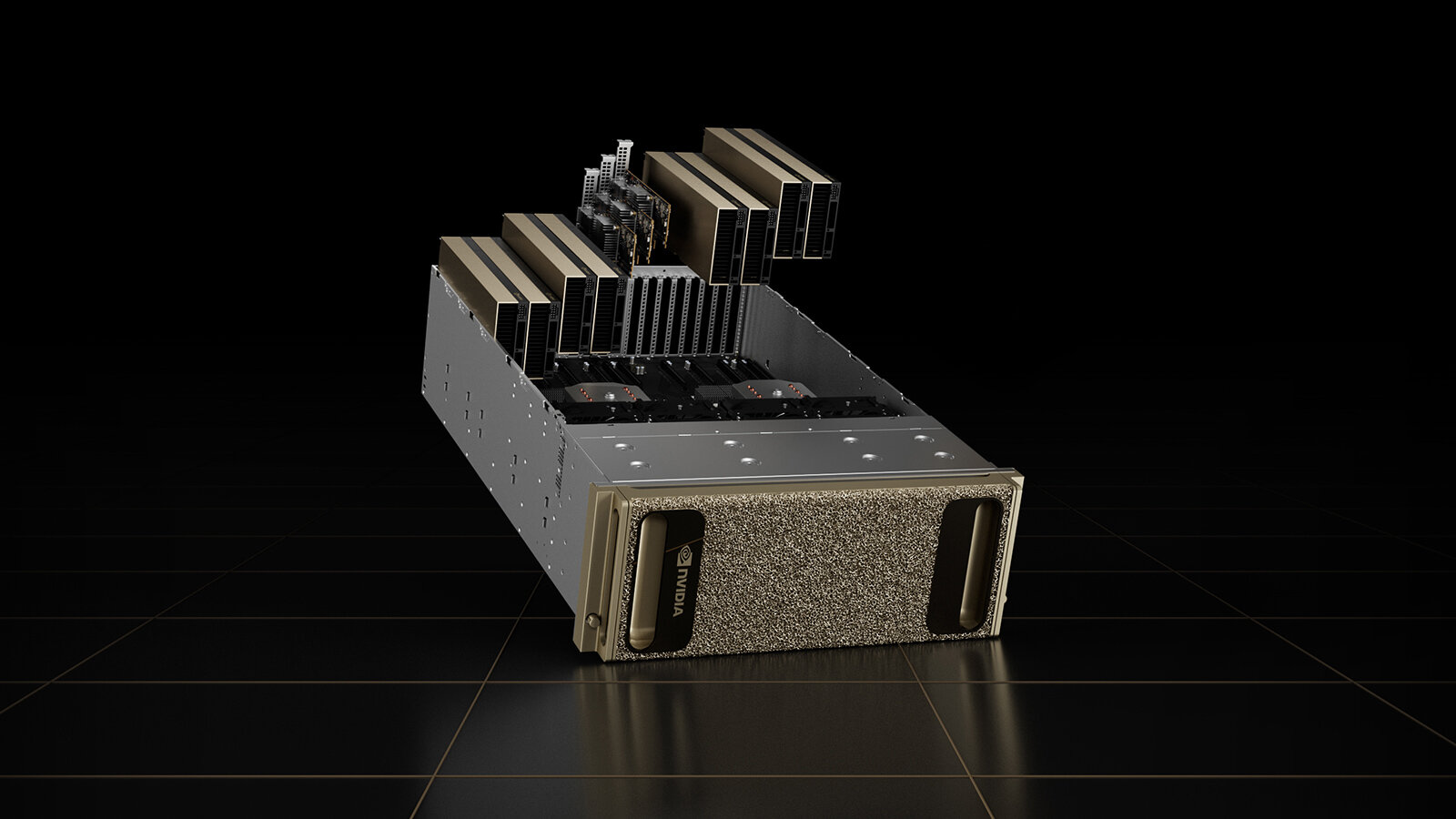Apart from the new consumer graphics cards GeForce RTX 4090 and RTX 4080, Ada Lovelace will soon also be used in servers. Nvidia has announced the use of the L40 graphics card for rendering workloads in the Omniverse for new OVX systems. The second generation of Nvidia OVX is scheduled to come onto the market in 2023.
Nvidia presented the OVX systems of the first generation at the spring edition of the GTC, as well as the new hopper architecture for AI workloads was presented. In the systems offered so far, eight graphics cards of the type Nvidia A40 with the Ampere architecture, which was current until yesterday, were used, which is the server variant of the RTX A6000 with GA102 and 48 GB GDDR6 (ECC) for workstations.
Nvidia L40 is “passively” cooled in the server
The second generation of OVX servers, on the other hand, uses the new Nvidia L40, the first server graphics card from Nvidia that is based on Ada Lovelace and is the counterpart to the new RTX 6000, which in turn brings Ada Lovelace to workstations. Detailed specifications for the L40 are still pending, but the first key data on the product page shows that the L40 is also equipped with 48 GB GDDR6 (ECC) and is specified with 300 watts. The AD102 GPU with 18,176 CUDA cores, 568 Tensor cores and 142 RT cores should also be used. Passive cooling with a height of two slots is typical for servers, because high-performance fans in the server housing ensure the air flow through the entire system and thus also the passive cards.
 Nvidia OVX server with Ada Lovelace (Image: Nvidia)
Nvidia OVX server with Ada Lovelace (Image: Nvidia)Nvidia's playground for digital twins
The system is designed for use in the Omniverse, i.e. Nvidia's virtual playground for mapping any digital twin to collaboratively implement entire factories, robotics, autonomous driving, 3D design and more in a virtual environment. The platform uses the Universal Scene Description (USD) originally developed by Pixar as “HTML for 3D rendering” in order to maintain compatibility among professional applications from the 3D environment. The services for managing the digital worlds are managed via Omniverse Nucleus, while the so-called connectors are to be understood as plugins for client applications that latch into the Omniverse. The more complex the digital twin, the more computationally intensive its calculation and the calculation of the simulations running in it.
CPU probably based on Sapphire Rapids
Eight L40 cards are used in the new generation of OVX servers. Nvidia is still silent on the CPU, but it is likely to be Sapphire Rapids after Nvidia CEO Jensen Huang declared this summer that the new DGX H100 no longer has AMD Epyc, which is still used in the DGX A100 with the Ampere architecture were, but was switched to Intel. The data sheet for the DGX H100 (PDF) still only mentions “Dual x86” in the CPU area.
But it is known that Nvidia in the new OVX server completes the switch to the ConnectX-7 SmartNIC (PDF), which, compared to the previous ConnectX-6, switches from PCIe Gen4 to Gen5 and is designed for 400 Gbit/s instead of 200 Gbit/s.
First server providers will deliver in early 2023
In addition to the regular OVX server with eight Nvidia L40, the systems can also be used again for Configure OVX Pod or OVX SuperPod, which, compared to the previous generation with Ampere architecture, include up to 32 OVX servers and are networked via Spectrum-3 (PDF). First vendors of second-generation OVX systems will be Inspur, Lenovo and Supermicro early next year, while Nvidia says Gigabyte, H3X and QCT will follow later.